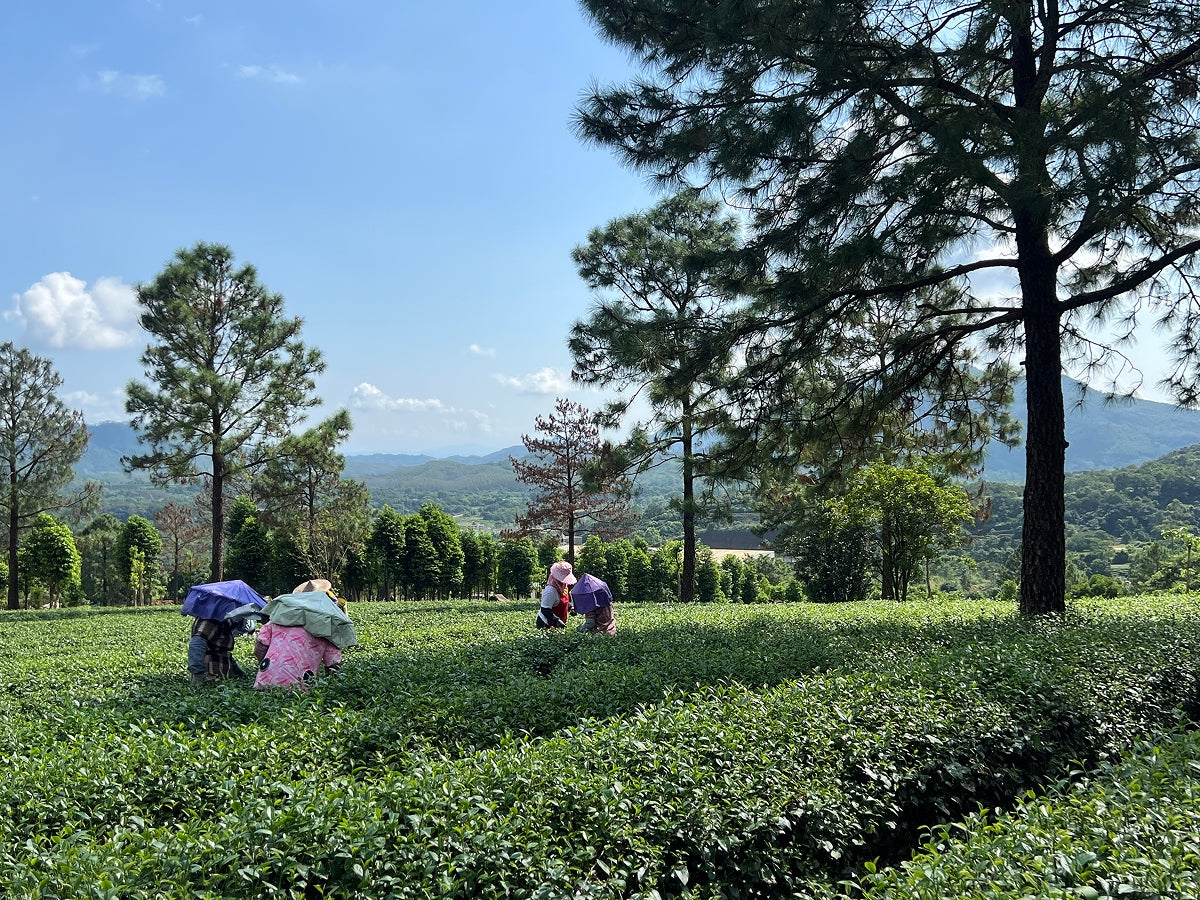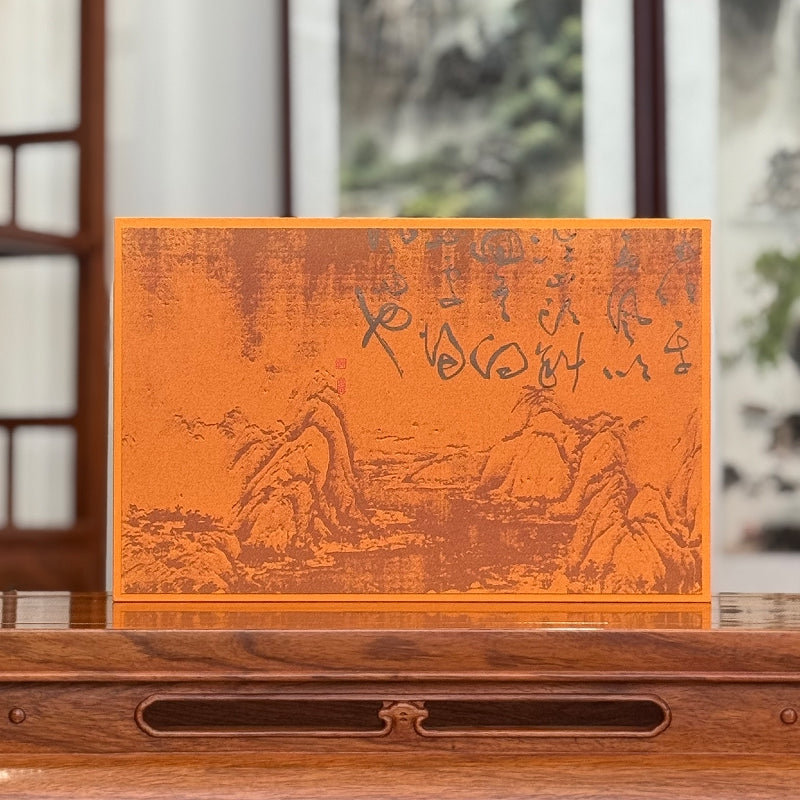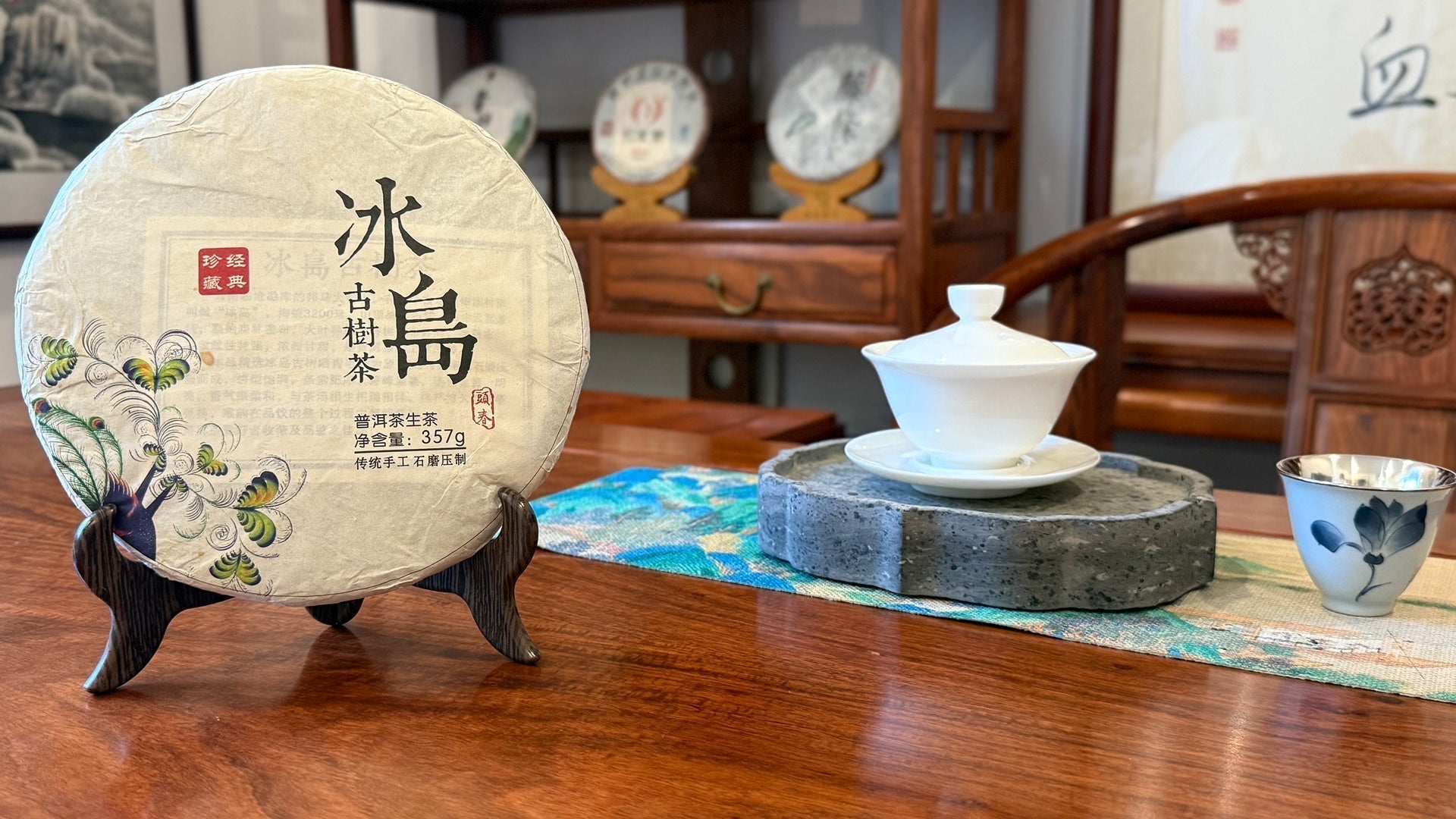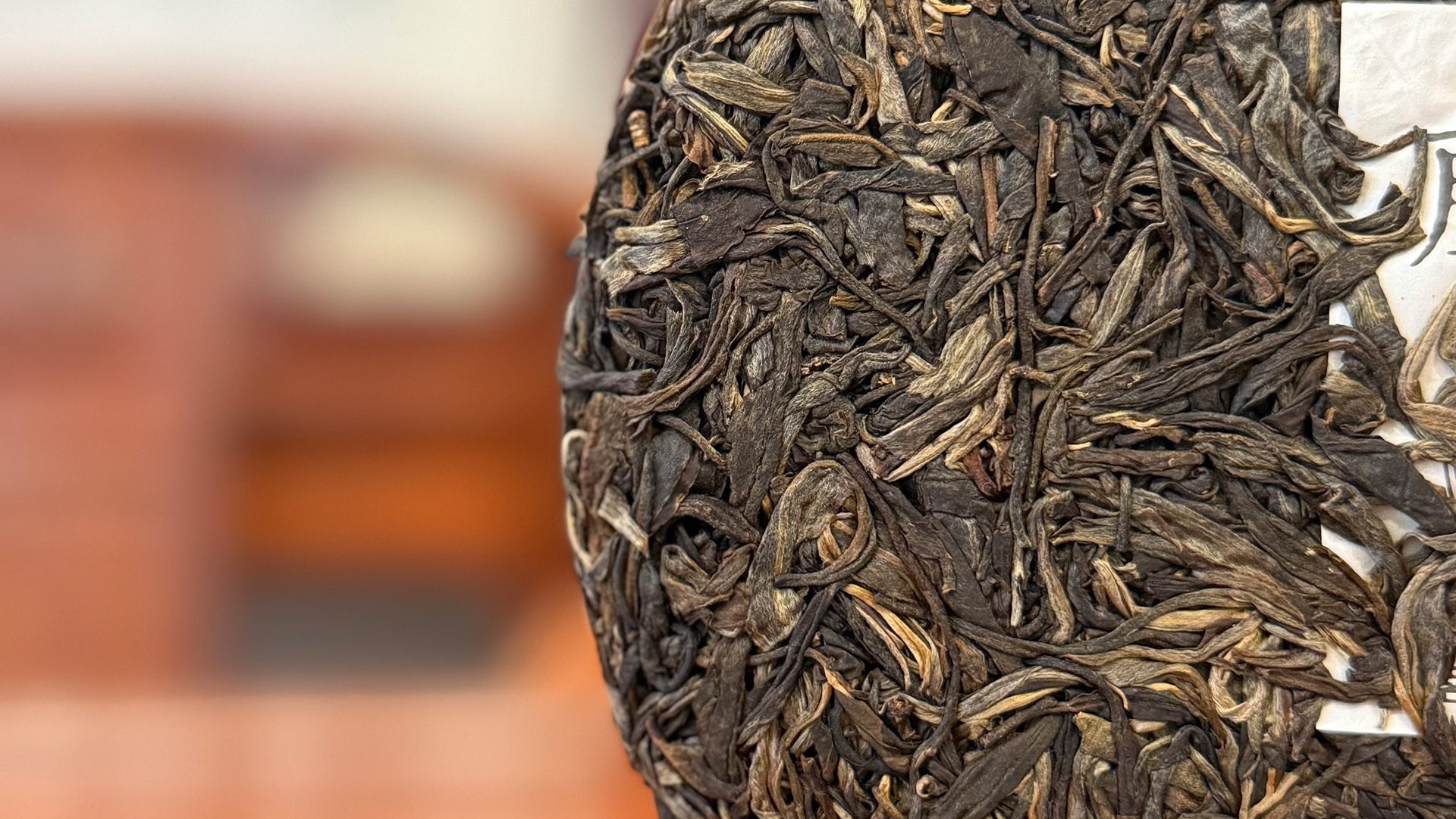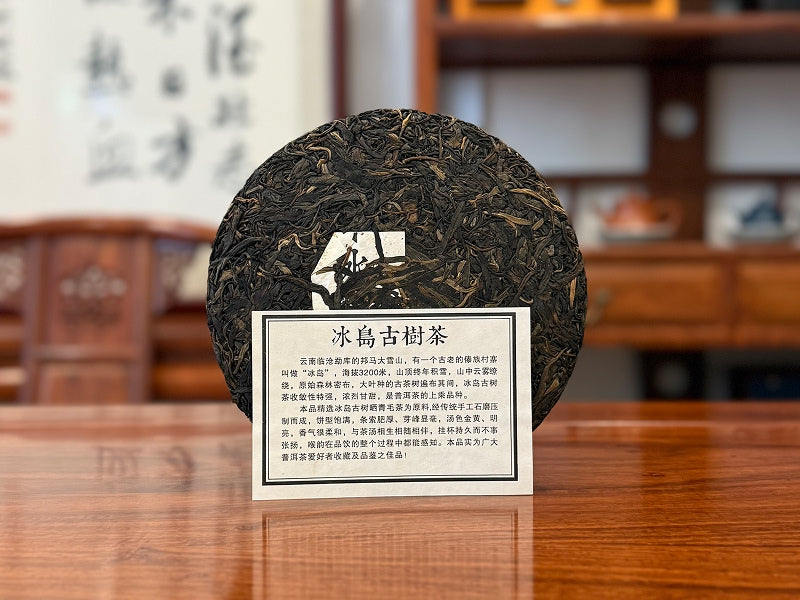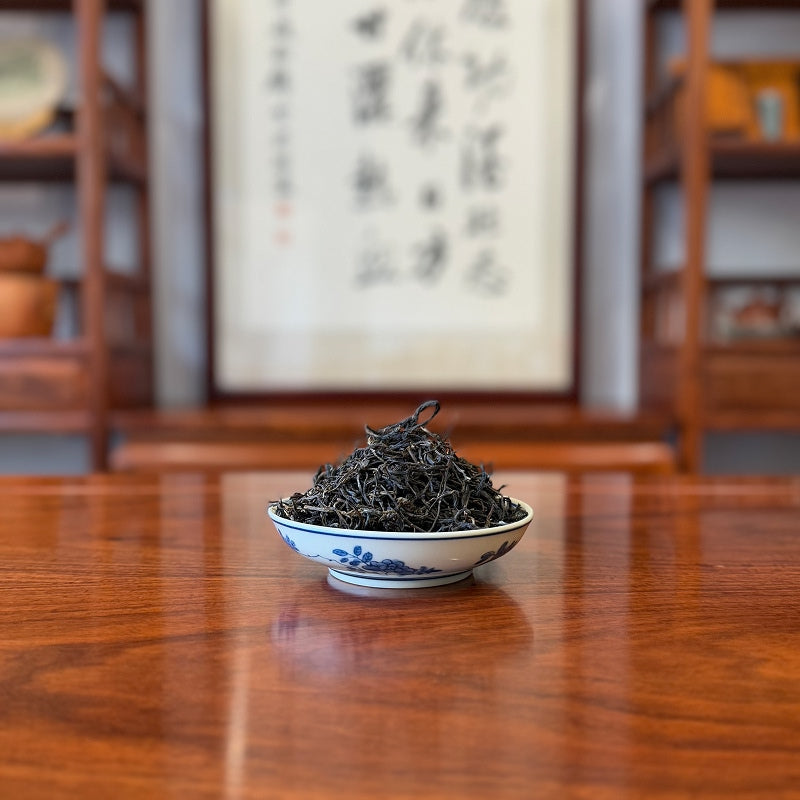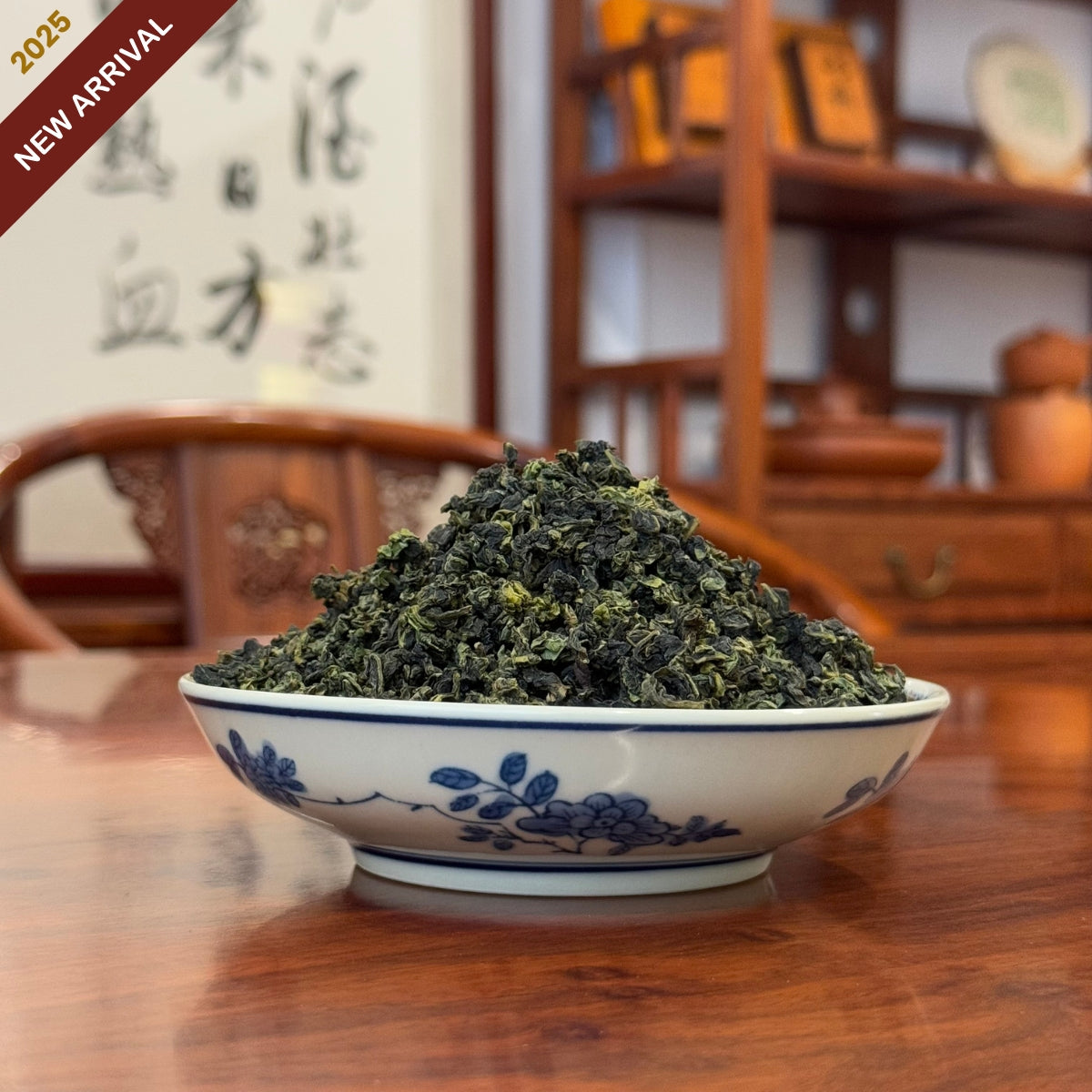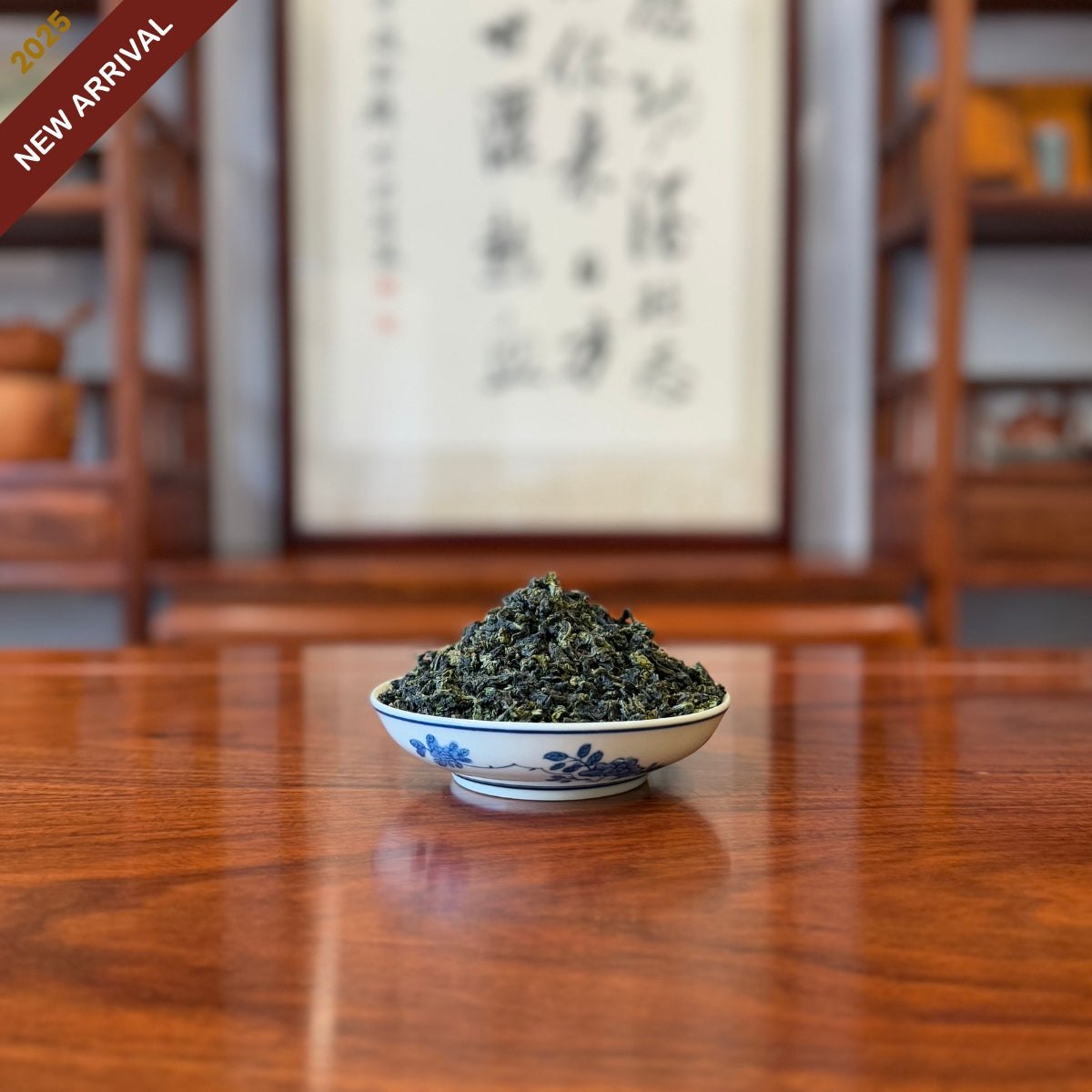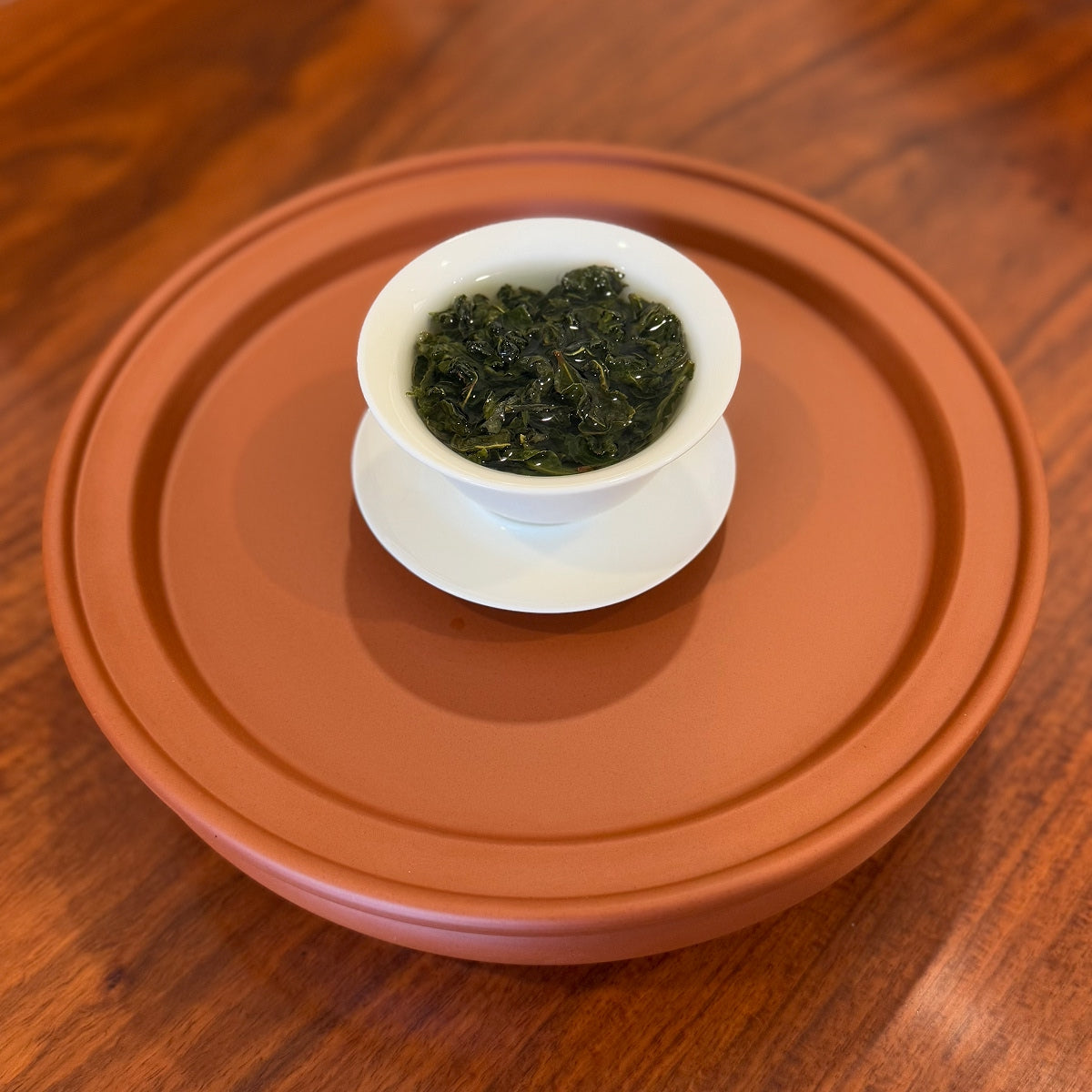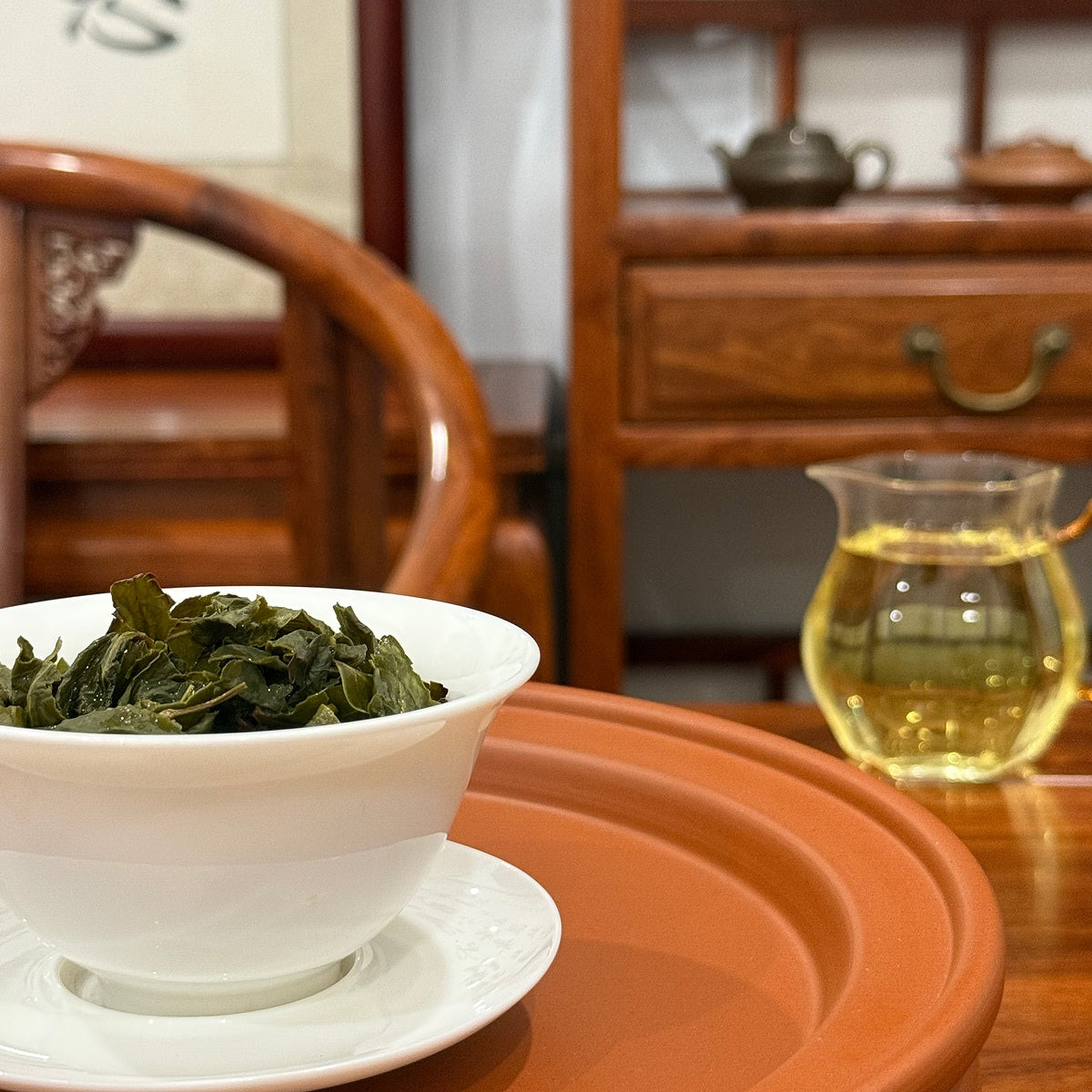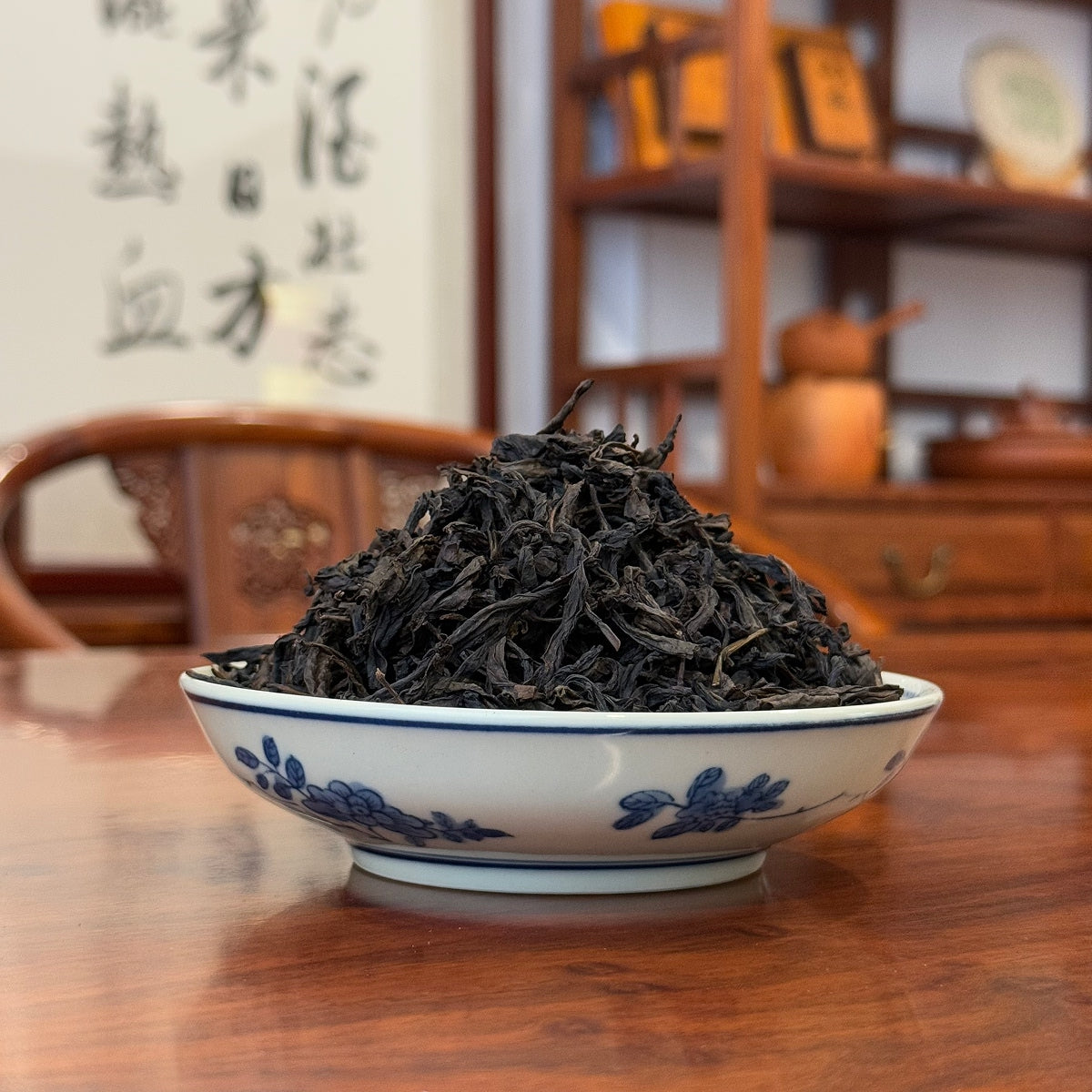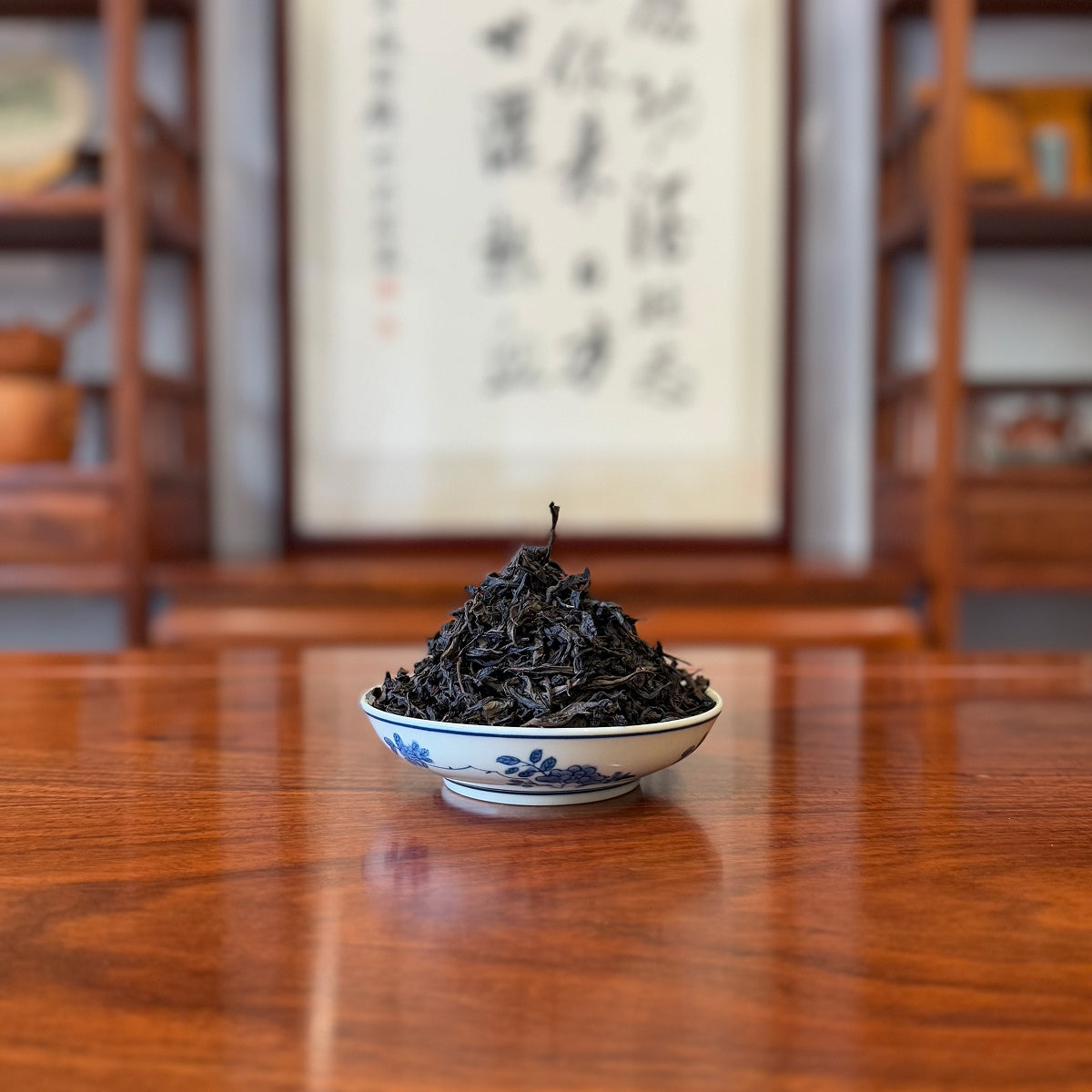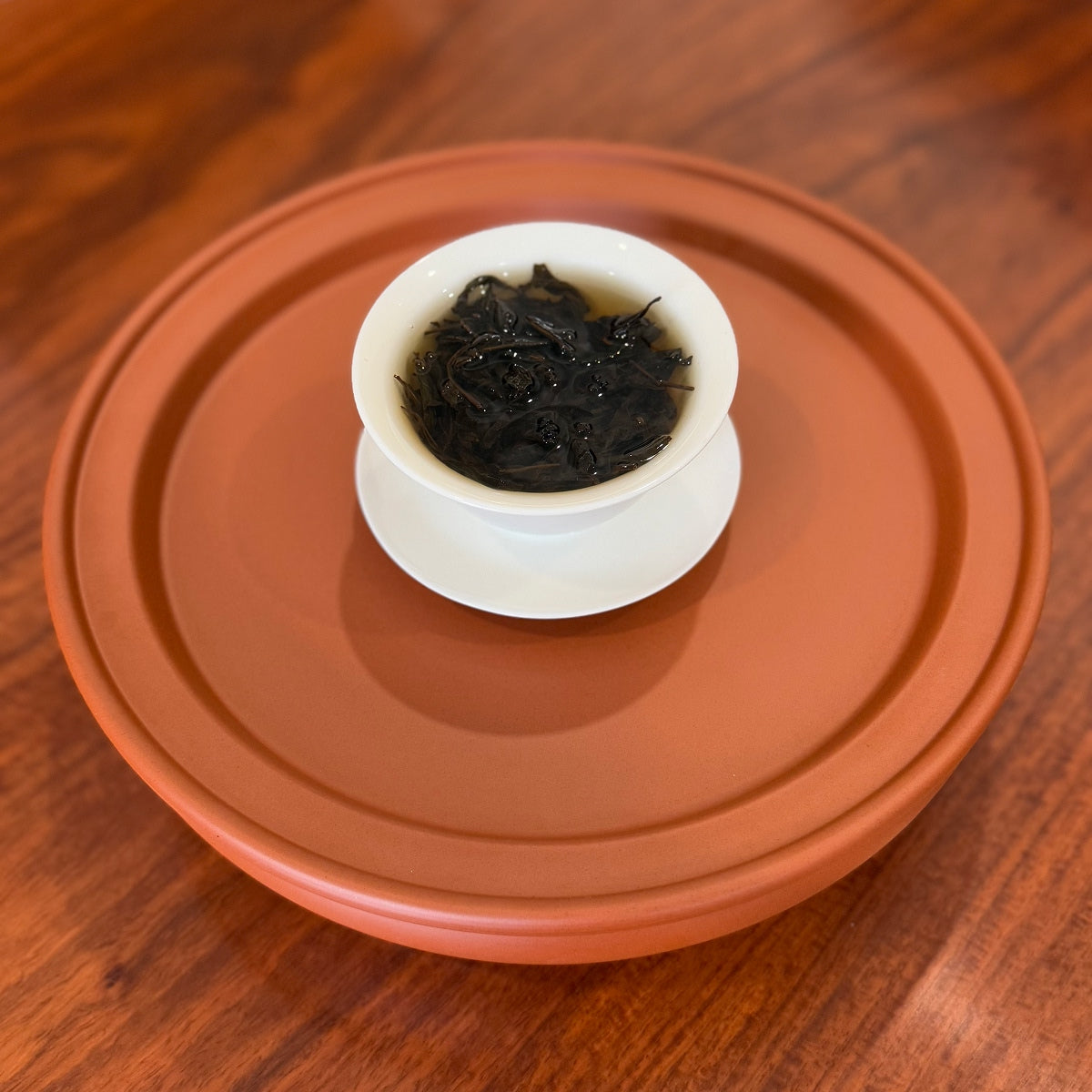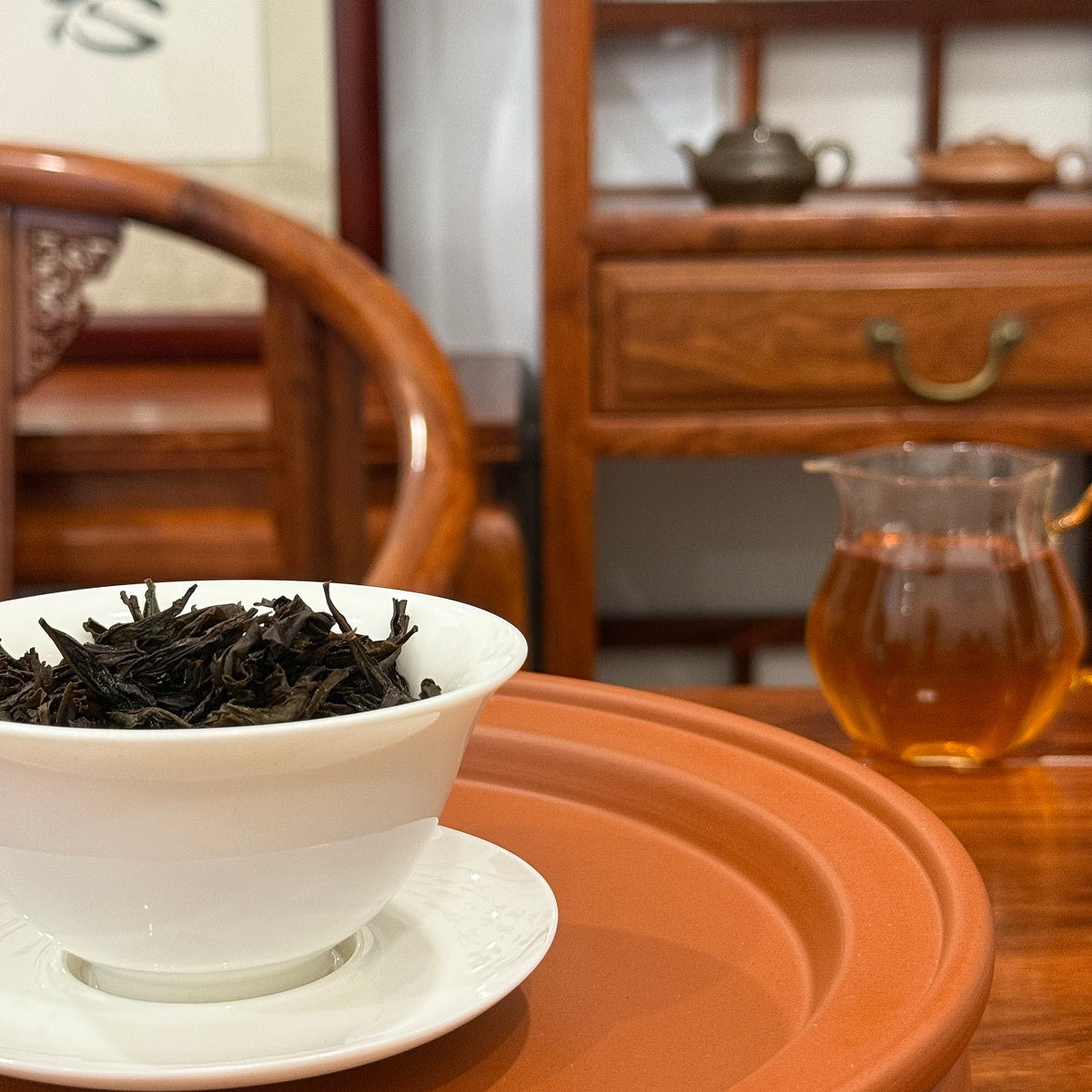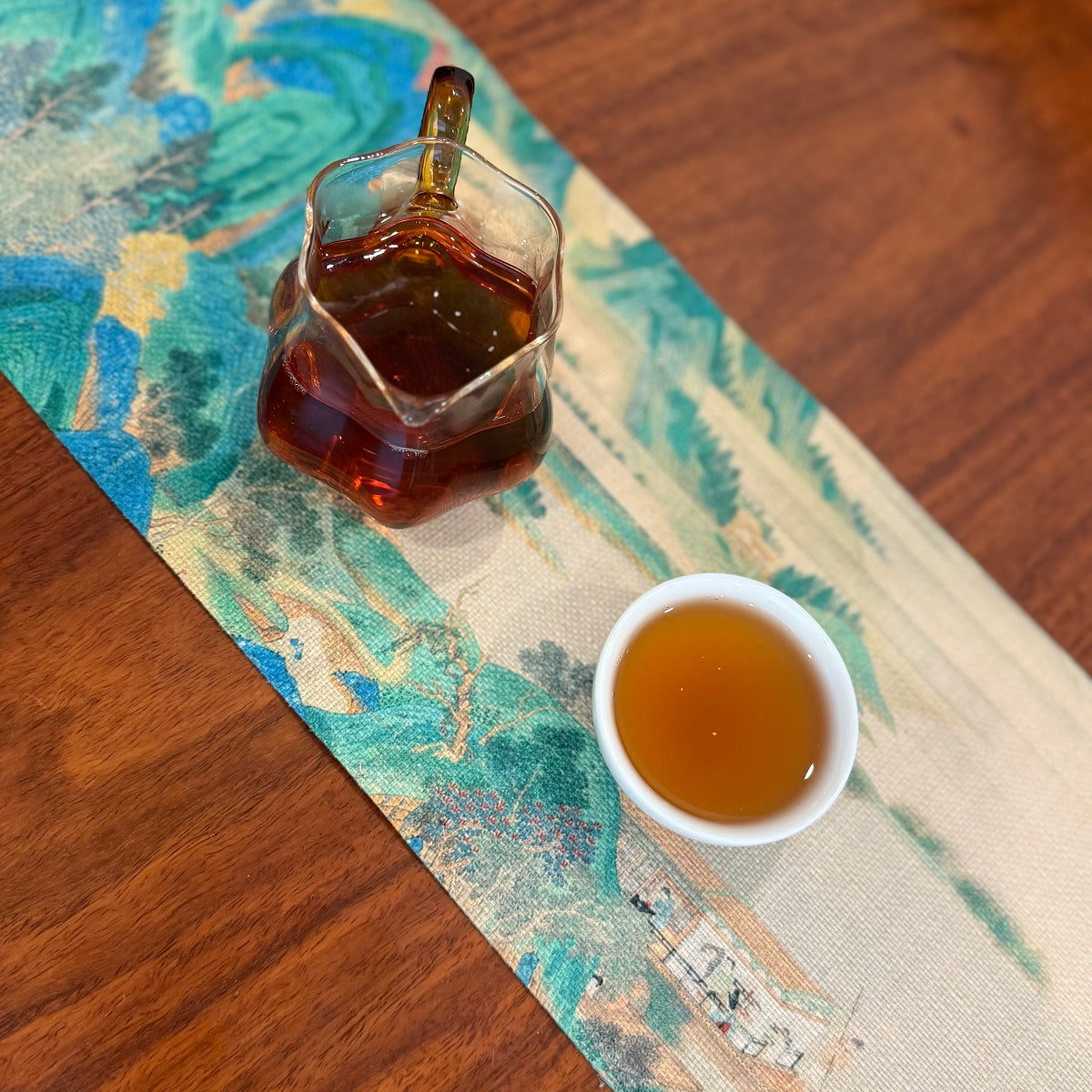Le profil aromatique unique du thé Pu-erh est façonné par l'interaction complexe du temps, de l'activité microbienne et des conditions environnementales. Prêt à explorer en profondeur les saveurs du thé Pu-erh ? Comprendre comment le thé Pu-erh évolue avec l'âge révèle une expérience sensorielle riche et complexe, appréciée des amateurs de thé du monde entier.

Cet article explore les différences de goût entre le thé Pu-erh cru et mûr, l'influence du terroir du Yunnan et des conseils pratiques pour déguster et identifier le thé Pu-erh de haute qualité.
Pour un aperçu complet, consultez notre guide principal : Acheter du thé Pu-erh — Un guide du thé unique de Chine
Quel est le goût du thé pu-erh cru ? Une saveur qui évolue avec le temps.

Le Pu-erh cru (Sheng) est apprécié pour sa saveur vibrante, vive et florale dès ses premières années. On y perçoit souvent des notes vives d'herbe fraîche et de fleurs sauvages, ainsi qu'une astringence caractéristique. Cette astringence n'est pas un défaut : elle indique que le thé est « vivant » et en pleine évolution, à l'image d'un fruit vert. De nombreux amateurs de thé apprécient la transformation de cette amertume en un arrière-goût sucré et persistant appelé hui gan (回甘).
Avec le temps, le Pu-erh cru vieilli s'adoucit. Sa saveur évolue vers des notes douces et complexes de fruits secs, de miel et de notes boisées subtiles. La texture du thé gagne en onctuosité et en rondeur. Cette transformation progressive est le plaisir du vieillissement du Pu-erh : chaque millésime révèle de nouvelles profondeurs de saveurs. Si vous êtes curieux de connaître le profil aromatique du Pu-erh cru vieilli, c'est ici que sa complexité s'exprime pleinement.
Envie de découvrir le meilleur du Pu-erh brut ? Les paramètres d'infusion – température de l'eau, quantité de feuilles et temps d'infusion – sont déterminants. Chez Chinese Tea Group, chaque Pu-erh brut de notre collection de thés Pu-erh bruts est accompagné de recommandations d'infusion claires, adaptées à son âge et à son caractère.
Quel est le goût du thé pu-erh mûr ? Une saveur née de la fermentation

(Feuilles de thé Pu-erh mûres infusées et liqueur)
Contrairement au Pu-erh cru, le Pu-erh mûr (Shu) subit un procédé post-fermentation spécial appelé wo dui (« empilage humide »), développé dans les années 1970 pour simuler un vieillissement prolongé. Ce procédé confère au Pu-erh mûr son caractère moelleux, terreux et onctueux en quelques mois seulement.
Imaginez un fruit déjà mûr à la cueillette : il s'affine encore avec l'âge, mais son cœur aromatique est déjà profond et satisfaisant. Le Pu-erh mûr offre souvent des notes réconfortantes de terre, de camphre, de dattes séchées et de bois vieilli, avec un arrière-goût doux et suave.
Pour savoir comment fonctionne cette fermentation et pourquoi elle est importante pour façonner le goût du thé Pu-erh fermenté, consultez : Pu-erh cru ou mûr : choisissez judicieusement Sheng ou Shu
Chaque Pu-erh mûr de notre collection Pu-erh mûr est accompagné de profils aromatiques détaillés et de conseils d'infusion. Trouver la saveur de votre Pu-erh préféré est un véritable parcours du combattant ; nos descriptions soignées et l'accompagnement de nos experts vous simplifient la tâche.
Comment la saveur du pu-erh évolue-t-elle avec l'âge ? La magie du temps

(Thé Pu-erh cru vieilli et infusé)
C'est lors du vieillissement du Pu-erh que le Pu-erh se distingue véritablement. Qu'il soit cru ou mûr, le Pu-erh continue de se transformer après sa production, tandis que le Pu-erh cru évolue plus radicalement. Avec le temps, le Pu-erh vieilli développe des arômes complexes – fruits secs, sous-bois, miel, minéraux – et une texture plus onctueuse et plus épaisse.
Comment savoir si un thé Pu-erh est bien vieilli ? Recherchez des saveurs rondes et harmonieuses, une couleur plus profonde et l'absence d'amertume prononcée. En général, le Pu-erh brut atteint son équilibre optimal après 5 à 10 ans, voire plus, selon les conditions de stockage. C'est essentiel pour savoir si le thé Pu-erh est bien vieilli ou pour une évolution optimale de ses saveurs à long terme.
Pourquoi les thés Pu-erh ont-ils des goûts différents selon les régions ? Terroir en action

(Thé Pu-erh mûr infusé)
La province du Yunnan abrite des milliers de microclimats et de sols différents, ce qui confère à ses thés Pu-erh une grande diversité. La saveur du Pu-erh est façonnée par l'altitude, la température, l'humidité et la richesse minérale des sols. Ce terroir Pu-erh confère à ses thés des personnalités régionales distinctes : certains offrent une vivacité fruitée, d'autres des notes florales profondes ou une douceur terreuse.
Connaître ces caractéristiques régionales vous permet d'apprécier l'origine de chaque thé. Chaque produit de notre collection Pu-erh indique le village ou la montagne d'origine, vous permettant ainsi de déguster et d'apprendre. C'est particulièrement utile pour comparer le goût des Pu-erh de différentes régions ou comprendre l'influence du terroir sur leur saveur.
Conseils pratiques pour savourer la saveur du Pu-erh

(Feuilles de thé Pu-erh crues infusées après trempage)
- Comment conserver le Pu-erh pour préserver sa saveur : Gardez-le au sec, aéré, sans odeur et à l'abri du soleil pour assurer un vieillissement optimal.
- Comment choisir un Pu-erh en fonction de ses préférences gustatives : les débutants préfèrent souvent la richesse moelleuse du Pu-erh mûr, tandis que les buveurs expérimentés explorent la complexité du Pu-erh cru vieilli.
- Comment identifier l'authentique saveur du Pu-erh : Le véritable Pu-erh offre une complexité équilibrée et une finale franche. Attention aux arômes artificiels et aux odeurs de moisi. Si vous vous demandez comment savoir si un thé Pu-erh est authentique, sa saveur est le premier indice.
FAQ sur les arômes du thé Pu-erh

(Feuilles de thé Pu-erh mûres infusées après trempage)
Q : Combien de temps faut-il laisser vieillir le Pu-erh brut avant de le boire ?
R : Cela dépend du thé, mais de nombreux thés Pu-erh crus atteignent une saveur plus douce et plus mature après 5 à 10 ans, en supposant un bon stockage.
Q : Quelle est la plus grande différence de saveur entre le Pu-erh cru et le Pu-erh mûr ?
R : Le pu-erh cru est vif et floral au départ, puis s'adoucit avec les années. Le pu-erh mûr est terreux, onctueux et sucré dès le départ grâce à la fermentation. C'est la différence de saveur classique entre le Sheng et le Shu Pu-erh.
Q : Le Pu-erh aura-t-il meilleur goût s’il est mal conservé ?
R : Non. Un mauvais stockage peut entraîner des arômes de moisi ou d'aigreur. Un bon vieillissement nécessite des soins appropriés.
Commencez votre voyage gustatif autour du Pu-erh

Maintenant que vous comprenez comment le temps, les microbes et le terroir façonnent la saveur unique du Pu-erh, vous êtes prêt à déguster avec attention. Que vous exploriez les différences entre les saveurs des Pu-erh Sheng et Shu ou que vous compariez les thés millésimés par région, chaque gorgée est une découverte.
Articles connexes que vous pourriez aimer
- Acheter du thé Pu-erh — Guide des thés uniques de Chine
- Comment acheter du thé Pu-erh : conseils de base et vendeurs de confiance

